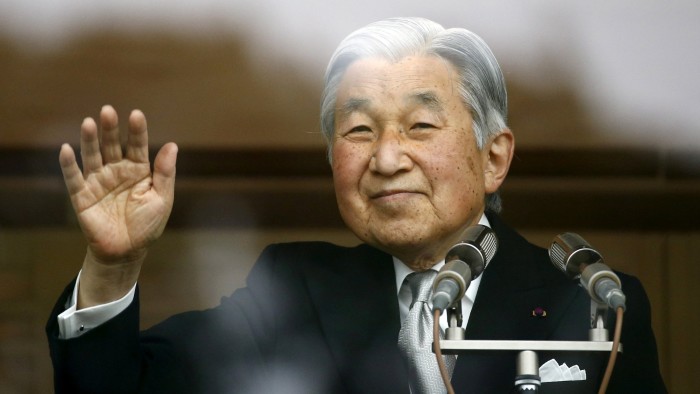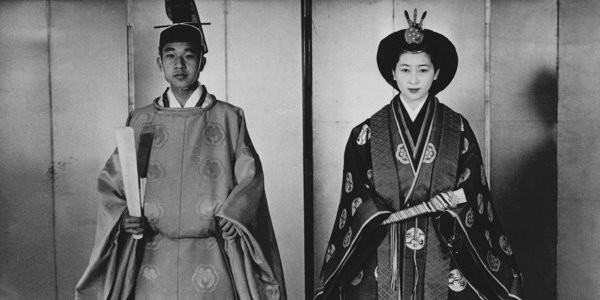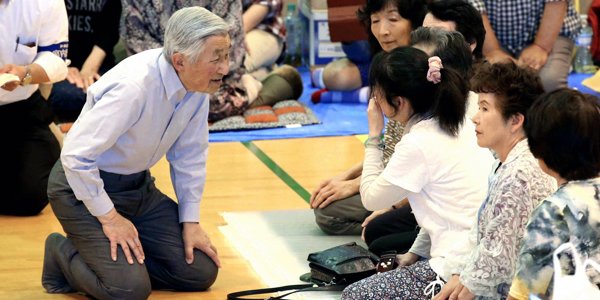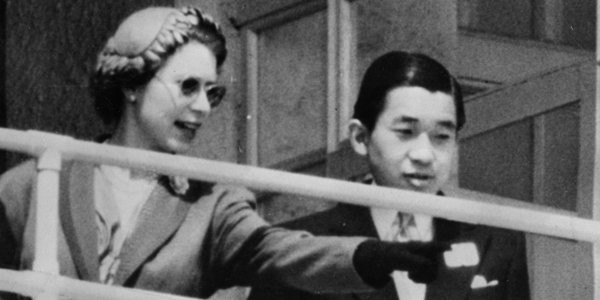Japan’s emperor set to explain desire to abdicate

Roula Khalaf, Editor of the FT, selects her favourite stories in this weekly newsletter.
Six years after the end of the second world war, a 17-year-old boy secretly took an evening stroll in Tokyo’s shopping district of Ginza with two schoolfriends, where he saw Japan’s recovery from a devastating battle that was fought in his father’s name.
People who recognised the boy, clad in an overcoat, politely looked away or bowed. He smiled as he rode a packed train for the first time and enjoyed an apple pie and English tea - but the café was soon surrounded by Japanese police and, after an escapade lasting just three hours, he returned to his lonely royal life.
The teenager was Tsugunomiya Akihito, revered as a direct descendant of Japan’s mythical first emperor Jimmu, who died about 2,600 years ago according to myth. Now aged 82, Japan’s 125th emperor is due to issue a rare video message on Monday, following reports of his desire to abdicate after reigning for nearly three decades.
The emperor’s intention to step down in a few years’ time, which was reported by public broadcaster NHK last month, has no precedent in modern Japan and is a shock to a country where he symbolises the stability of the state. There is no provision in Japan that allows an emperor to abdicate, so new legislation would be needed to make it possible.
The reported move also comes at a crucial moment for Japan: in last month’s parliamentary elections, Prime Minister Shinzo Abe won the two-thirds majority that he needs for his long-held aim of revising the country’s pacifist constitution, which was adopted in 1947 after the second world war defeat.
Japan’s emperor has an ambiguous role as a “symbol of the state and of the unity of the people”, having been stripped of political power in the postwar constitution. However, just as the young Akihito sought to explore the world outside the royal palace, his reign since 1989 has been defined by his attempts to bring the Chrysanthemum Throne closer to his people.
Born in 1933, Akihito’s childhood activities were strictly controlled by the conservative imperial household staff. He had a lonely childhood and did not question his destiny, writing “I shall be Emperor” when asked in class what he wanted to be as an adult.

After Japan’s second world war defeat in 1945, Akihito’s father Hirohito invited Elizabeth Gray Vining, a Quaker from Philadelphia, to teach his son English. Ms Vining wrote in a 1952 memoir that she sought to free the prince from his “very dull and restricted life” and under her guidance he pursued his interest in science and a passion for fish and horses.
In 1959, at the age of 25, he married Michiko Shoda, the daughter of a flour milling executive, in Japan’s first royal marriage to a commoner. Breaking with tradition and in stark contrast to his childhood, during which he lived in a separate house to his siblings, their three children were raised in their household. Empress Michiko made their school lunch boxes herself.
Emperor Akihito also surprised Japan’s citizens in 1991 when he knelt on the floor and spoke to people at an emergency relief centre following a volcanic eruption in southern Japan. In previous reigns, subjects were not allowed to make eye contact with the emperor, let alone touch him.
“I do believe that it is important for the Emperor, in his status as symbol of the nation, to know our country and our people and to share the people’s feelings,” the emperor said in 2002. Following Japan’s 2011 earthquake and tsunami, he delivered his first video message and called on “each and every Japanese” to help each other.

Court pressures have weighed on the emperor and his family. In 1993, Empress Michiko suffered a nervous breakdown and lost her voice, while their daughter-in-law Crown Princess Masako suffered from depression a decade later. A rift also seemed to emerge between the emperor and his eldest son Crown Prince Naruhito, who cryptically noted that “developments” at the imperial household had “denied” his wife her career and personality.
While Emperor Akihito has sought to heal the wounds of Japan’s wartime aggression, his words have at times angered Japan’s rightwing revisionists. He speaks often about the importance of correctly remembering history and expressed his “deep remorse” on the 70th anniversary of the second world war.
Akira Hashimoto, a former journalist and one of the schoolmates who was with the teenage prince Akihito on his stroll through Ginza, suggested that the emperor’s desire to abdicate could be aimed at focusing attention on the future of the imperial family, thus delaying any debate about changing the constitution’s Article 9, which prohibits war as a means to settle international disputes.
“The emperor is a strategic thinker who implements a plan that has been well-considered,” Mr Hashimoto said. “He is stubborn when it comes to his thinking on peace.”

Comments